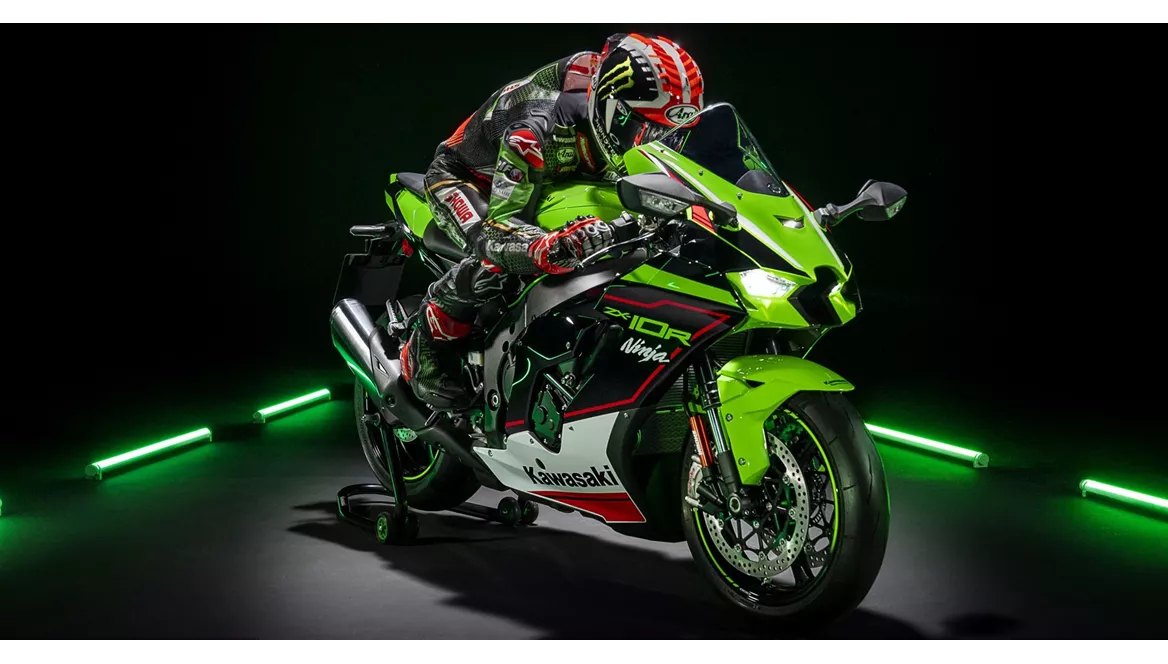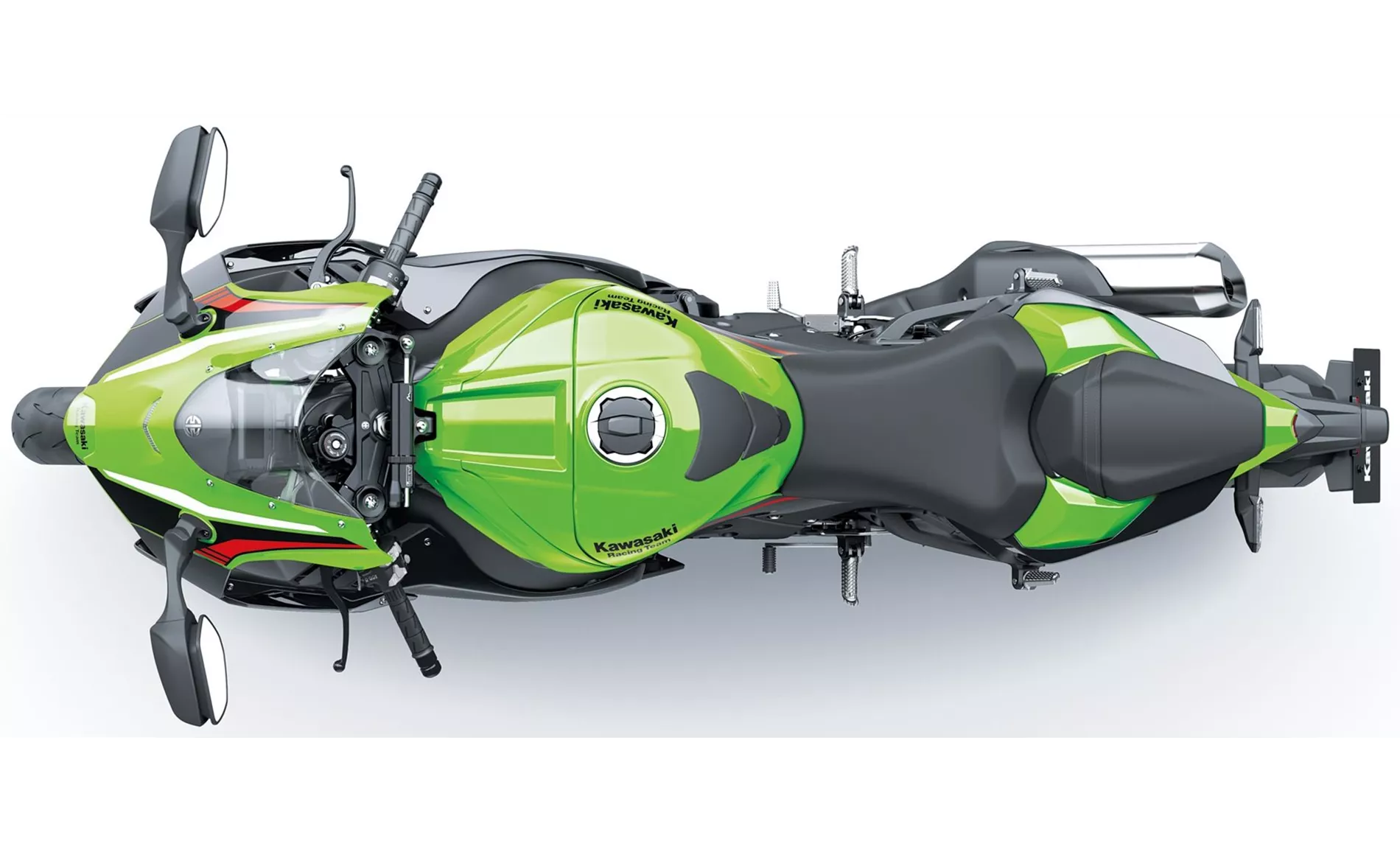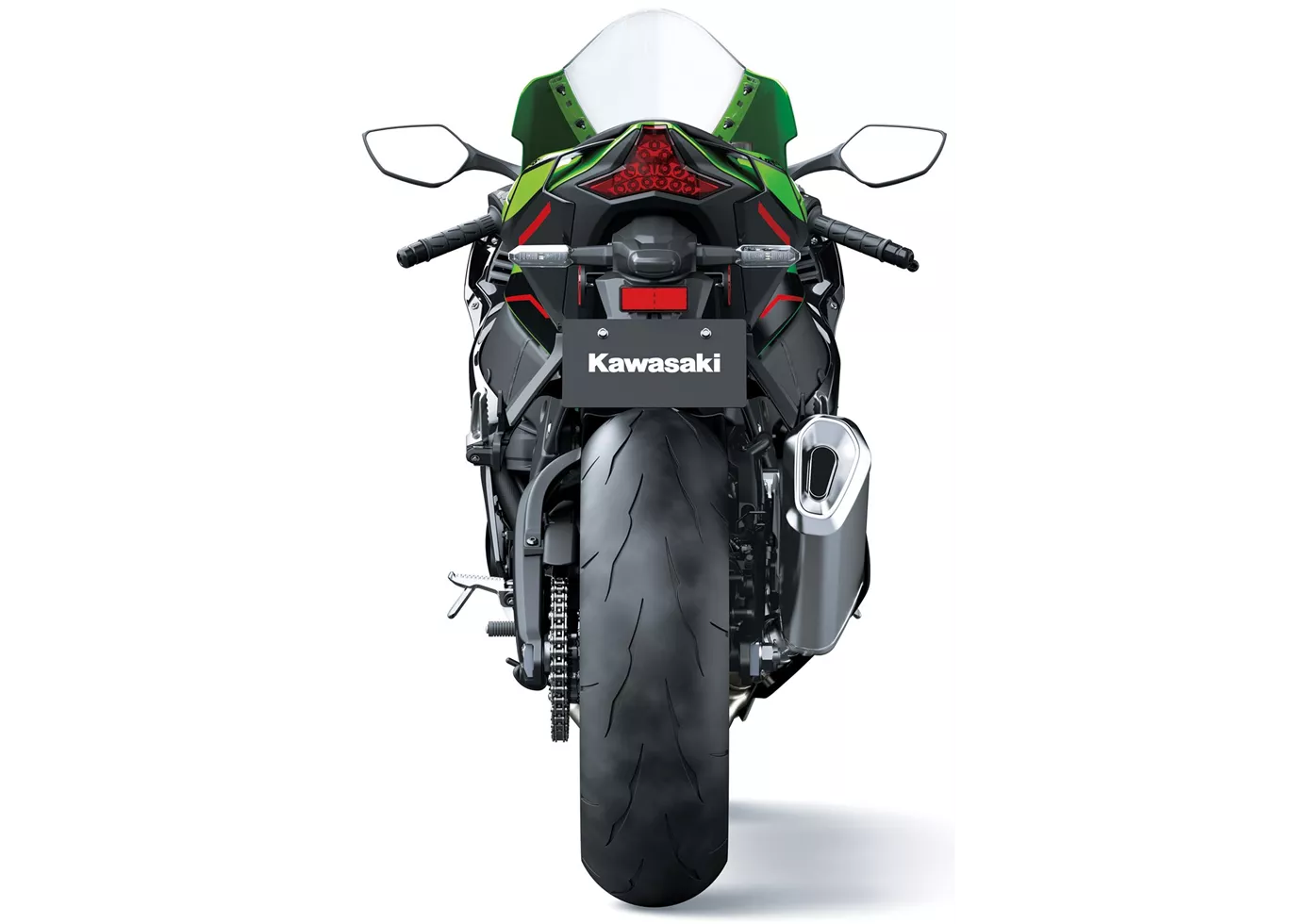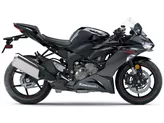Kawasaki Ninja ZX-10R 2021 vs. Kawasaki Ninja ZX-6R 2019

Kawasaki Ninja ZX-10R 2021

Kawasaki Ninja ZX-6R 2019
Vue d’ensemble - Kawasaki Ninja ZX-10R 2021 vs Kawasaki Ninja ZX-6R 2019
When comparing the Kawasaki Ninja ZX-10R 2021 and the Kawasaki Ninja ZX-6R 2019, it is clear that both models have their own strengths and weaknesses.
Starting with the Kawasaki Ninja ZX-10R 2021, it boasts high-quality workmanship and strong components. Its engine is in-line and delivers an impressive 203 HP of power and 114.9 Nm of torque. The compression ratio is 13, indicating its high performance capabilities. The throttle bore is 47 mm, allowing for quick and responsive acceleration. The bike has a displacement of 998 ccm and features a DOHC valve system with 4 valves per cylinder.
In terms of suspension, the front suspension is an upside-down telescopic fork with a diameter of 43 mm. It offers adjustments for compression, preload, and rebound. The rear suspension is a swing arm with a monoshock absorber, also offering adjustments for compression, preload, and rebound. The frame is made of aluminum, providing a lightweight and sturdy structure. The brakes on the front are double disks with a diameter of 330 mm and utilize radial, petal technology.

Kawasaki Ninja ZX-10R 2021
In terms of dimensions and weights, the front tire width is 120 mm with a diameter of 17 inches, while the rear tire width is 190 mm with a diameter of 17 inches. The wheelbase is 1440 mm, providing stability during high-speed maneuvers. The seat height is 835 mm, accommodating riders of various heights. The kerb weight is 207 kg, indicating a relatively heavy bike. The fuel tank capacity is 17 liters, allowing for longer rides without frequent refueling.
Moving on to the Kawasaki Ninja ZX-6R 2019, it also has its own set of strengths. The engine is in-line and delivers 130 HP of power and 70.8 Nm of torque. The compression ratio is 12.9, indicating a good balance between power and efficiency. The throttle bore is 38 mm, slightly smaller than the ZX-10R, but still providing responsive acceleration. The displacement is 636 ccm, offering a decent amount of power for a supersport bike.
The suspension setup is similar to the ZX-10R, with an upside-down telescopic fork on the front and a swing arm with a monoshock absorber on the rear. Both offer adjustments for compression, preload, and rebound. The frame is also made of aluminum, providing a lightweight and rigid structure. The front brakes are double disks with a diameter of 310 mm and utilize radial technology.
In terms of dimensions and weights, the front and rear tire widths are slightly smaller than the ZX-10R, with 120 mm and 180 mm respectively. The wheelbase is 1400 mm, slightly shorter than the ZX-10R. The seat height is 830 mm, also slightly shorter than the ZX-10R. The kerb weight is 196 kg, indicating a lighter bike compared to the ZX-10R. The fuel tank capacity is the same at 17 liters.

Kawasaki Ninja ZX-6R 2019
In terms of weaknesses, the Kawasaki Ninja ZX-10R 2021 has been reported to have load change reactions in the partial load range, which may affect the smoothness of the ride. The quickshifter is also said to be somewhat slow, which may impact the overall performance. Additionally, the display on the bike is reported to be somewhat small, which may make it difficult to read certain information while riding.
On the other hand, the Kawasaki Ninja ZX-6R 2019 has been criticized for some details that could have more finesse, such as the number plate holder and indicators. The overall silhouette of the bike is also said to lack sportiness and could benefit from a more aggressive design.
In conclusion, both the Kawasaki Ninja ZX-10R 2021 and the Kawasaki Ninja ZX-6R 2019 have their own strengths and weaknesses. The ZX-10R offers a more powerful engine and a higher level of overall performance, while the ZX-6R provides a good balance between power and handling. Ultimately, the choice between the two models will depend on the rider's preferences and priorities.
Caractéristiques techniques Kawasaki Ninja ZX-10R 2021 par rapport à Kawasaki Ninja ZX-6R 2019
Avantages et inconvénients en comparaison
Avantages et inconvénients en comparaison
Kawasaki Ninja ZX-10R 2021

Avec la Ninja ZX-10R, Kawasaki propose pour l'année modèle 2021 un package complet et sophistiqué qui, avec sa nouvelle face avant, ressemble vraiment à 2021. La moto offre un espace surprenant pour le pilote et on se sent bien en selle. Le moteur poussif ne laisse rien à désirer - sauf peut-être une plus grande discipline en charge partielle. Pour mener à bien ce projet, Kawasaki a misé sur des ingrédients de qualité : suspension Showa, amortisseurs de direction Öhlins, freins Brembo avec disques de 330 ainsi qu'une électronique haut de gamme. Grâce à son électronique de qualité et à son moteur souverain, la Ninja ZX-10R fait même assez bonne figure sur les routes de campagne - pour autant que l'on soit capable de souffrir un peu en matière de position assise en raison du concept.
Kawasaki Ninja ZX-6R 2019

La Kawasaki Ninja ZX-6R est une moto supersport bien dimensionnée. Avec ses 130 ch, elle permet une conduite sportive mais contrôlée. Le rapport de transmission plus court et la cylindrée supplémentaire de 36 cm3 permettent de rouler un peu plus feignant pour débrayer. Un digne virage pour le segment des supersports de 600 cm3.
Comparaison des prix Prix moyen du marché Kawasaki Ninja ZX-10R vs Kawasaki Ninja ZX-6R
There are a few key differences between a Kawasaki Ninja ZX-10R 2021 and a Kawasaki Ninja ZX-6R 2019. It takes less time to sell a Kawasaki Ninja ZX-6R with 160 days compared to 177 days for the Kawasaki Ninja ZX-10R. Since model year 2005 1000PS.de editors have written 51 reviews for the Kawasaki Ninja ZX-10R and 37 reviews for the Kawasaki Ninja ZX-6R since model year 2005. The first review for the Kawasaki Ninja ZX-10R was published on 1/11/2004 and now has more than 2,900 views. This compares to more than 5,800 views for the first review on Kawasaki Ninja ZX-6R published on 9/2/2002.























